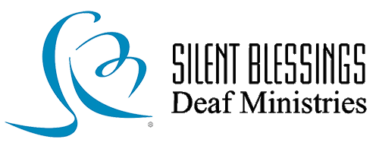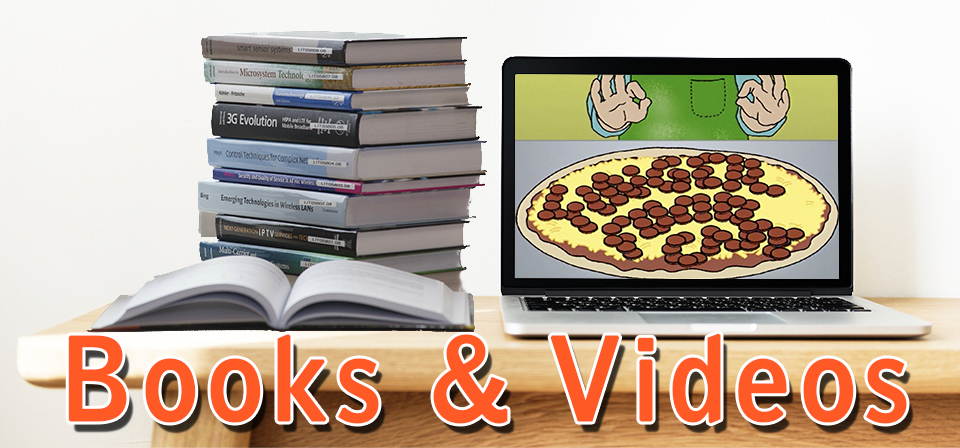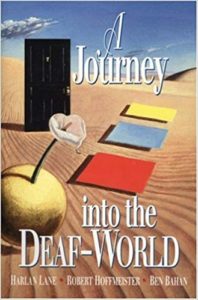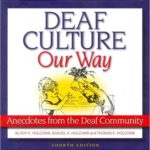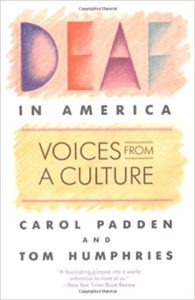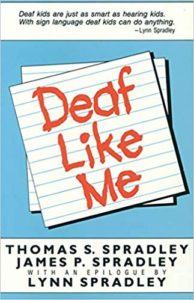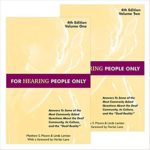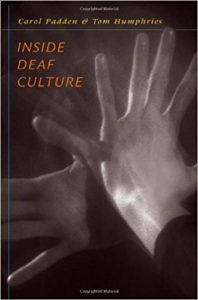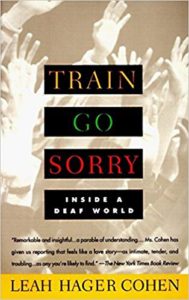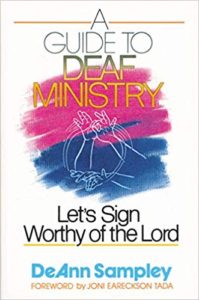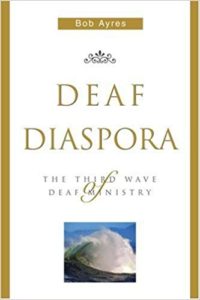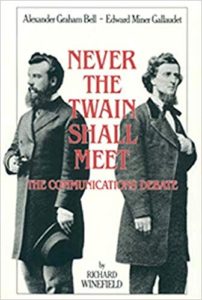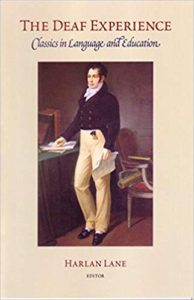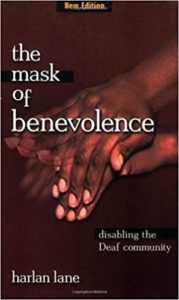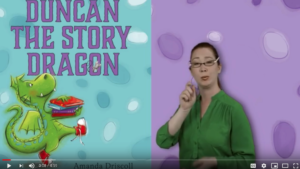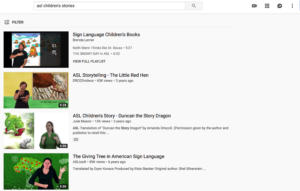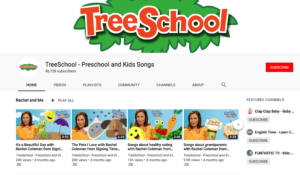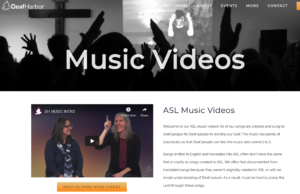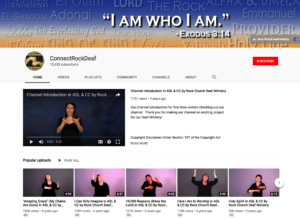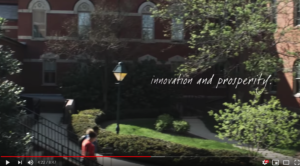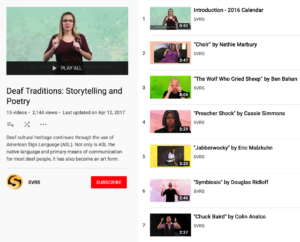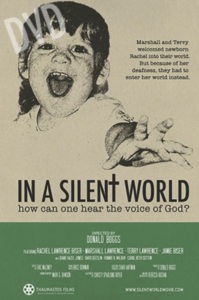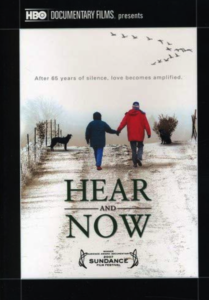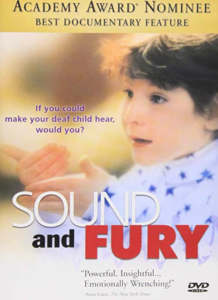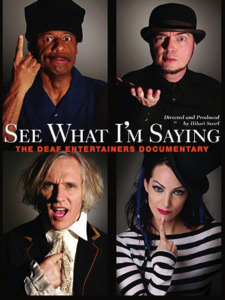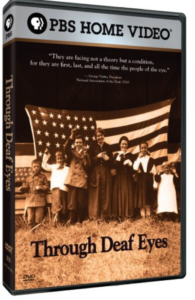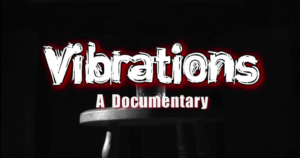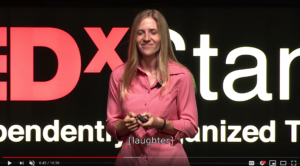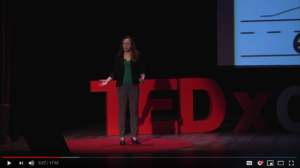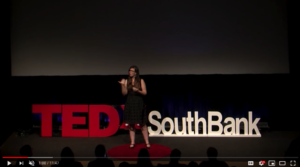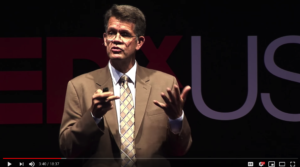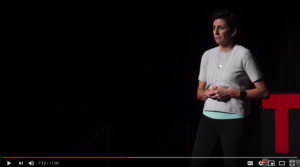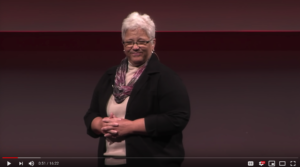These resources are not produced by Silent Blessings, but they are very valuable to understanding Deaf Culture! These lists are a starting point, there’s plenty more where these came from.
Click on any title for a summary and link to the resource.
BOOKS
Insight/Experience
In this comprehensive and engrossing study, three distinguished scholars of Deaf culture—one hearing, one deaf, and one coda (child of deaf adults)—offer clear, penetrating insights into the existence and makeup of the deaf world, the community whose natural language—American Sign Language in the United States—is manual and visual.
This is much more of a story than the subtitle suggests, beautifully written and deeply affecting. Born in the Midwest in 1952, Walker is one of three hearing daughters of Gale and Doris Jean Walker, both deafened as babies by illnesses. As the oldest child, the author served as her parents' "interpreter," dealing with outsiders.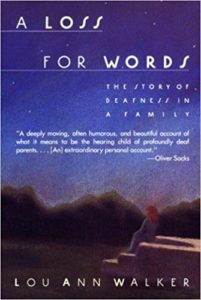
Using humorous stories with illustrations, this classic collection brings deaf culture to life through personal experiences and practical day-to-day information. Various aspects of the deaf world are illuminated through anecdotes, updated in this edition to include new stories about the foibles of the latest communication technologies, including VRS, videophones, email, and instant messaging. Also provided is classroom material for teachers that can be used as excellent supplemental reading for deaf studies, ASL, or interpreting classes, as well as a springboard for discussions about deaf culture.
Written by authors who are themselves Deaf, this unique book illuminates the life and culture of Deaf people from the inside, through their everyday talk, their shared myths, their art and performances, and the lessons they teach one another. Padden and Humphries employ the capitalized "Deaf" to refer to deaf people who share a natural language--American Sign Language (ASL)--and a complex culture, historically created and actively transmitted across generations.
Deaf Like Me is a story of 2 young parents struggling to raise their deaf daughter, Lynn, in a hearing world.
This book, a collection of 60 essays from "Deaf Life" magazine, contains a thoughtful, and sometimes humorous, look at Deaf Culture, and the hearing worlds misconception of it. The book is well organized for easy reference.
In this absorbing story of the changing life of a community, the authors of Deaf in America reveal historical events and forces that have shaped the ways that Deaf people define themselves today. Inside Deaf Culture relates Deaf people's search for a voice of their own, and their proud self-discovery and self-description as a flourishing culture.
This portrait of New York's Lafayette School for the Deaf is not just a work of journalism. It is also a memoir, since Leah Hager Cohen grew up on the school's campus and her father is its superintendent. As a hearing person raised among the deaf, Cohen appreciates both the intimate textures of that silent world and the gulf that separates it from our own.
Ministry
DeAnn Sampley's book is about ministry to the deaf - - not only worship, but also nurture, service, and understanding. A Guide to Deaf Ministry reveals that serving deaf people involves cross-cultural communication. Those who would minister to the deaf must understand their needs, their language, their world. This book encompasses all these things, showing readers how to begin a deaf ministry, the resources that are available, what the deaf culture is like, and the special aspects of interpreting through sign in the church and worship settings. This is a book for all who seek to minister to deaf people, who live with them, or who number themselves among them.
This anthology features Deaf and hearing authors who offer their experience and perspectives on cultural values, ASL, social interaction in the Deaf community, education, folklore, and other topics.
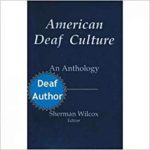
Deaf people have the right to read, study, pray, worship, serve, discuss, and meditate on God's word. Ayres calls for the rediscovery of the spiritual legacy of the Deaf-World as he explores the history of ministry programs and proposes a definitive plan for the future. Deaf ministry patterns over the past forty years are highlighted and a description is given of the New Culture of Deafness--brought about by the radical changes in Deaf-World.
Language/Education
Throughout the last two centuries, a controversial question has plagued the field of education of the Deaf - should sign language be used to communicate with and instruct deaf children? Never the Twain Shall Meet focuses on the debate over this question, especially as it was waged in the nineteenth century, when it was at its highest pitch and the battle lines were clearly drawn. The two major figures in this debate were Alexander Graham Bell, who believed in oralism, and Edward Miner Galludet, who advocated the use of sign language for the education of deaf children. Yet these opponents had remarkably similar backgrounds - both had Deaf mothers and influential fathers, and both were teachers of the Deaf. This engrossing story looks at how their views of society affected their philosophies of education, and how their work continues to influence the education of Deaf students even today.
The Deaf Experience shows clearly how this extraordinary era of French deaf education influenced the adoption of the manual method by the first schools for deaf students in America, in sharp contrast to the oral movement that repressed sign- language-centered education for nearly a century afterward.
A look at the gulf that separates the deaf minority from the hearing world, this book sheds light on the mistreatment of the deaf community by a hearing establishment that resists understanding and awareness. Critically acclaimed as a breakthrough when it was first published in 1992, this new edition includes information on the science and ethics of childhood cochlear implants. An indictment of the ways in which experts in the scientific, medical, and educational establishment purport to serve the deaf, this book describes how they, in fact, do them great harm.
VIDEOS
Movies
A deaf actor who plays a superhero on a TV show must look beyond the cape to inspire a deaf boy to believe in himself.
Pain and suffering is a part of the human experience. We’ve all wondered where God is in times of trouble. The story of Job reminds us that our Redeemer lives and is present to help us in our darkest moments. Filmed in ASL, captioned version available.
A deaf movie where two teachers switch bodies for a day. While trying to figure out how to get back a group of thugs attack them. Filmed in ASL, captions available.
An inspirational movie based on the life of Deaf UFC fighter Matt Hamill. Raised by a hearing family, Hamill finds himself an outsider in the Deaf community, but follows his dreams, eventually becoming the first Deaf wrestler to win a national collegiate championship. The film stars Deaf actors Russell Harvard and Shoshannah Stern as Matt Hamill and Kristi Hamill, and Raymond J. Barry as Matt’s grandfather.
A teacher belatedly discovers just how important his job really is in this emotional drama. Glenn Holland (Richard Dreyfuss) is a man with a deep love of music and a desire to write at least one piece of lasting significance. However, playing piano in cocktail lounges while he works on his own compositions doesn't pay the bills, so in 1965 he reluctantly accepts a job as a high school music teacher. Over the next 30 years, Holland is able to teach a great deal about both music and life to thousands of kids who pass through the various classes he leads and school bands he directs; however, he finds it easier to reach his students than his son Cole (played, as he grows older, by Nicholas John Renner, Joseph Anderson, and Anthony Natale), who is Deaf, which drives a wedge between Glenn and his wife Iris (Glenne Headly), who has willingly learned ASL. Richard Dreyfuss earned an Academy Award nomination as Best Actor for Mr. Holland's Opus; the cast also includes Olympia Dukakis, William H. Macy, and Jay Thomas.
The Legend of the Mountain Man, set in picturesque Montana, features a typical, dysfunctional family of five. The father, who has been at odds with his parents for many years, decides to send his three children to his parents' ranch for the summer. The children unexpectedly encounter a creature, one that has never been seen nor recorded in history books. Filmed in ASL, captions available.
Since the earliest days in her childhood Lara has had a difficult but important task. Both her parents are deaf-mute and Lara has to translate from sign-language to the spoken word and vice versa when her parents want to communicate with other people. Getting older and more mature she becomes interested in music and starts to play clarinet very successfully. However her parents are deaf, they cannot share Lara's musical career. The day comes when Lara has to decide between her parents and her own ambitions.
Family drama about a deaf and hearing couple who struggle to decide whether or not to give their deaf son a cochlear implant.
Mark Medoff's tough play about deafness is sweetened and softened in this 1986 film adaptation directed by Randa Haines (Wrestling Ernest Hemingway). William Hurt plays a teacher newly hired at a school for deaf children, and Marlee Matlin is the deaf and withdrawn janitor who captures his attention. Romantic and heartfelt, the film makes its audience care very much about its two leading characters, and wince when Hurt's well-meaning instructor allows Matlin's handicap to become a problem. Haines develops some interesting visual ideas to underscore the isolation of Matlin's world, particularly a lovely refrain that finds Matlin swimming alone at night. The drama is cut somewhat by the bouncy energy and good humor of Hurt's students. Piper Laurie is very good in a supporting role as Matlin's mother.
Online
Duncan the Story Dragon
Presented in ASL; captions available.
Want more children's stories in ASL? Check these results in YouTube:
TreeSchool YouTube channel has videos about tons of fun things like your favorite songs and stories, colors, the alphabet, science, health, or just being happy! You might even learn some sign language.
All of Deaf Harbor's songs are created and signed by Deaf people for Deaf people to worship our God. The music has plenty of bass beats so that Deaf people can feel the music and connect to it.
Documentaries
Gifted musician Marshall Lawrence and his wife Terry, a communication professor, were excited to welcome newborn Rachel into their world. But because of Rachel's deafness-they were forced to enter hers.
Hear and Now is a deeply personal memoir by Emmy(r) Award-winning filmmaker Irene Taylor Brodsky about her deaf parents' decision to undergo risky cochlear implant surgery - the only one of its kind that can restore a sense. At 65, Sally and Paul Taylor decided they wanted to hear their first symphonies, their children's voices, and talk on the phone. This fascinating, 85-minute documentary follows the couple's complex, moving journey from the silent world they knew to a new - and often profoundly challenging - world of sound. Interweaving home video footage with behind-the-scenes moments of the Taylors before and after their operations, on doctor's visits, and in their daily lives, the film is a touching and highly emotional exploration of the psychological dimensions of adapting to a restored sense of hearing. Having been hearing impaired their entire lives, the Taylors must learn to recognize what they are hearing and, in the process, discover just how subjective the sense of sound can be.
You might expect that the cochlear implant, a device that can give deaf people the gift of hearing, would be embraced by the deaf community. Josh Aronson's Sound and Fury, a compelling and often devastating documentary, tells a different story. Two brothers, one deaf and one hearing, grapple with a decision concerning their deaf children, and the debate that rages through the extended family turns less on technology and medical concerns than social politics and culture. The deaf parents of a school-age girl fear what the implant would do to her unique identity, while the hearing parents of a toddler see no question at all. Aronson gives all sides their say, but ultimately the increasingly angry arguments reveal prejudices and fears from both sides and split the once-harmonious family, much like they have split hearing and deaf communities across the country.
Alternately amusing, enlightening, sad and inspiring--the charming documentary "See What I'm Saying" chronicles four deaf entertainers and how they pursue their artistic passions despite all obstacles. This isn't a warm and fuzzy film meant to elicit sympathy, however, but a strong portrait of never giving up. All four individuals highlighted in Hilari Scarl's vivid new piece have achieved some amount of success (or even stardom) in the deaf community - but translating that acceptance to the bigger stage of the hearing world poses unique challenges for those with hearing impairments. Scarl doesn't attempt to portray anyone as a victim or a hero, though. These are just ordinary performers who want to pursue their craft like anyone else with ambition, talent, and a dream.
A two-hour HDTV documentary that explores 200 years of Deaf life in America. The film includes interviews with prominent members of the Deaf community, including actress Marlee Matlin and Gallaudet University president emeritus I. King Jordan. Interwoven throughout the film are six short documentaries produced by Deaf media artists and filmmakers. Poignant, sometimes humorous, these commissioned stories bring a personalized sense of Deaf life in America to the film. Through first person accounts and the film as a whole, THROUGH DEAF EYES tells the story of conflicts, prejudice and affirmation that ultimately reaches the heart of what it means to be human.
Presentations
In the United States, two-thirds of hearing-impaired people do not complete high school. In this talk at TEDxStanford, Rhodes Scholar Rachel Kolb -- who was born deaf -- shows what is possible through family support and self-belief, and proves that what is assumed about you and what you can actually achieve don't always match up.
Shows image of renaissance painting. Viewer discretion advised.
Presented in spoken English, open captioned.
Approximately 17% of Americans (36 million people) are deaf or hard of hearing. Still, much of the hearing population would say they never interact with the deaf. The deaf have separated themselves from the hearing, why? Our discrimination and lack of understanding of deaf culture.
Presented in English, auto-captioning available but difficult to understand.
Auslan (Australian Sign Language) is the language of deaf Australians, and every child should have the right to learn and communicate through it, argues Drisana Levitzke-Gray. Driansa is the recipient of the 2015 Young Australian of the Year Award in recognition of her passion and dedication in advocating for the human rights of deaf people, raising awareness about Auslan, and the rights of deaf children in Australia to access Auslan from birth.
Over the past decade, tremendous progress has been made in ensuring that families have access to hearing screening when a baby is born. Approximately 95% of babies now receive a hearing screen shortly after birth. Now, greater emphasis must be placed on training early childhood education and health care providers.
This presentation focuses on the evolution of deaf technology and presents an overview of both ASL and Listening and Spoken Language.
Presented in English; captions available
Pathological ideology is an imposed view, stemming from values and beliefs, which place high value on speaking and hearing. Hence, the pervasive definition that “deaf” is a condition, a deficiency, which it creates a language delay, has become a fiber of our society. We need to challenge people to “react differently” when encountering the ideology of what is means to be DEAF. Deaf people are a culturo-linguistic community and when they are allowed to create their own ideology in their natural environment, they can, in return, be celebrated for their contributions to society.
Presented in ASL with English interpretation; captions available.
Deaf advocate Glenna Cooper shares her personal journey as a Deaf child of hearing parents who were told to avoid teaching their daughter sign language. Glenna shares insight into Deaf culture, including why it's not considered rude to tell someone their new hairstyle isn't flattering. You'll also learn about a cutting edge movement in interpretation that pairs Deaf with hearing interpreters.
Presented in ASL with English interpretation; captions available.
